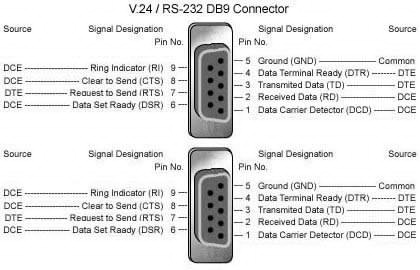
Maybe there is some standardization too, but I doubt that we are able to get access to such documents easily. My suspicion is, that one of the major vendors started in that way and the others simply followed. Various manufacturers’ names may replace the DB in the specifications.
DB9 CONNECTOR PINOUT SERIAL
A computer's serial COM port (DTE) is usually a male port as shown below, and any peripheral devices you connect to this port usually has a female connector (DCE). Where the connector pin-out in the automotive world comes from, I do not know. They are commonly designated as DB-9 or DB-25 with the number used to differentiate between the pin counts. Below is the pinout of a typical standard male 9-pin RS232 connector, this connector type is also referred to as a DB9 connector.

In an industrial environment, in my experience vendors of automation products usually stick to such documents, because they want to be compatible to other products. The CANmod.input uses a DB9 (D-sub9) connector for supply and CAN-bus.
DB9 CONNECTOR PINOUT HOW TO
Many of the documents published by CiA are downloadable from their web-site. This article covers the basics of CAN bus wiring, showing a simple CAN bus wiring diagram and how to wire up a CAN bus cable. Additionally, it provides the guidelines for selecting cables and connectors for use in CANopen systems. The serial DB9 connector is suitable for mini PCs, industrial computers, brackets etc. This document provides device and network design recommendations for CANopen physical layer. Recommendation - Part 1: Cabling and connector pin assignment Its purpose is to convert the RJ-45 pinout on. They publish documents on various parts of CAN networks and CAN related protocols. You use the DB-9 to RJ-45 console adapter to connect the ASCII terminal console to your N6000 series system. But its instructive to have the straight connection described. As were interested in a serial console cable well focus on the cross-over or null modem connection.

"CAN in Automation" (CiA) is an association that tries to standardize CAN in industrial environments. One for a straight connection, such as used with a modem, and one for a cross-over or null modem connection.


 0 kommentar(er)
0 kommentar(er)
